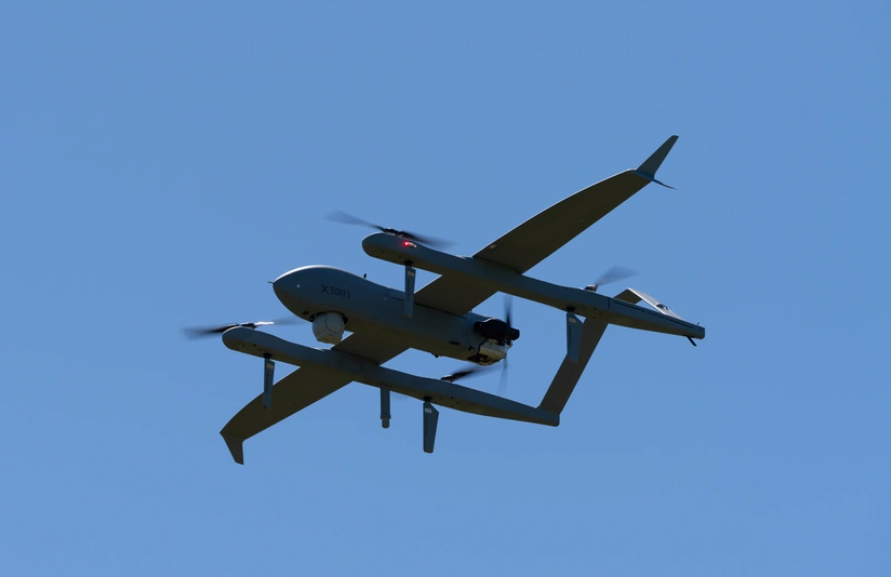
The Textron Aerosonde 4.8 HQ during the FTUAS Flight Demonstration. (Photo: Army PEO Aviation)
After cancelling the Future Tactical UAS (FTUAS) program, the Army plans to begin procuring initial brigade-level unmanned aircraft system (UAS) capabilities in fiscal year 2026 to address its requirement to field a Shadow drone replacement.
Col. Nick Ryan, director of the Army Capability Manager for Unmanned Aircraft Systems, told reporters on August 12 that both Textron Systems and Griffon Aerospace, the two competitors for the axed FTUAS effort, were invited to compete for the brigade UAS directed requirement opportunity.
“The requirement for a brigade to have that type of capability for an unmanned aircraft system is still valid and still exists,” Ryan said. “The money is still there. We are now leaning into the Brigade UAS directed requirement that existed in parallel to [FTUAS]. And we’ve already done a competition and a review of other capabilities out there that meet that brigade-level requirement.”
FTUAS was the Army’s effort to find a replacement for the legacy Shadow drone, with the Army having selected Textron Systems’ Aerosonde Mk. 4.8 Hybrid Quad UAS and Griffon Aerospace’s Valiant for a competitive prototyping effort to inform a production award that had been planned for late fiscal year 2025.
The Army had said it was interested in a “vertical takeoff and landing, runway-independent, reduced acoustic signature aircraft that can be transported organically while providing commanders with ‘on the move’ reconnaissance, surveillance, and target acquisition capabilities.
Along with ending the FTUAS development effort, the Army’s new transformation plan has included cutting procurement of Joint Light Tactical Vehicles, Humvees, AH-64D Apaches, Gray Eagle UAS and the M10 Booker and development of the Improved Turbine Engine Program and Robotic Combat Vehicle.
“The appetite of the senior leaders is, basically, we don’t want to follow the old acquisition process and wait another year, two years or three years to start fielding this out to units, because that’s what FTUAS was under, the kind of old acquisition process. So they just canceled the program,” Ryan said.
The Army first detailed the brigade UAS directed requirement last December, with an interest in assessing solutions that could serve as a Shadow gap-filler until the FTUAS program of record was ready for fielding.
Ryan noted the brigade-level UAS is likely to be a Group 3 capability and that the Army was interested in more commercial off-the-shelf solutions.
The Army is now waiting on final funding for the brigade UAS directed requirement to be approved and received before announcing which vendors have been selected to provide initial capabilities in FY ‘26, Ryan added.
“That will be kind of a tranche one capability. But then we are already rapidly planning to iterate,” he said.
A sources sought notice released last December detailed an interest in interim UAS capabilities that are “available, production ready, and cost-effective.”
“The system’s mission characteristics include a field-level reconfigurable, modular payload capability to execute the primary mission of Reconnaissance, Surveillance and Target Acquisition, a secondary mission of communications relay and an enhanced mission set of lethal payload delivery and electronic support,” the Army wrote in the sources sought notice.
The House’s recently-passed FY ‘26 defense appropriations bill rebuked the Army’s proposed FTUAS cut and included $185.5 million to continue the development effort.
A version of this story originally appeared in affiliate publication Defense Daily.